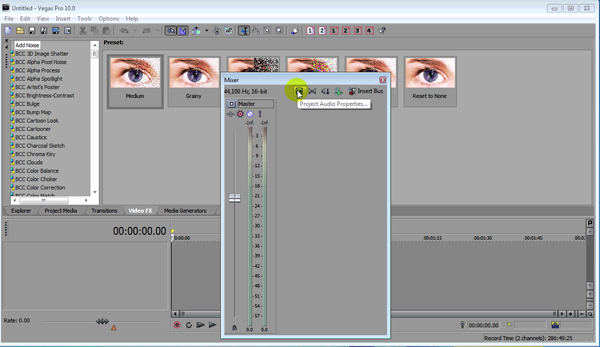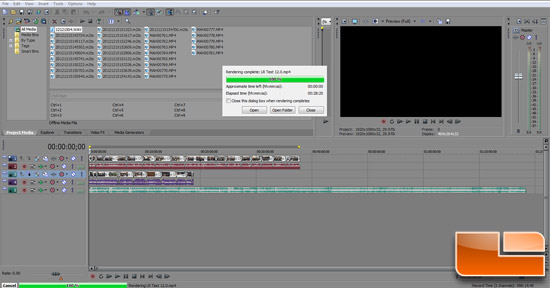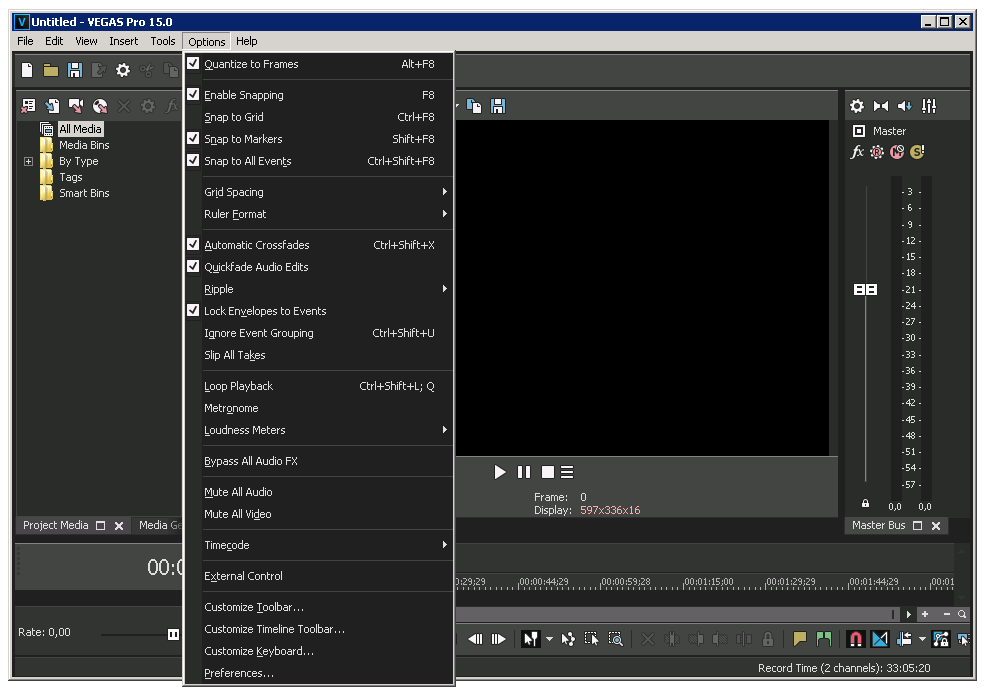Sony Vegas Pro 11 Text Effects Pack Download
Posted by admin- in Home -29/10/17var q sonyvegaspro11texteffectspackdownload Kotaku. It turns out theres a code to unlock Shin Akuma in. Ultra Street Fighter II. Revealed by Capcom at this years SDCC, you can play as the characters demon form by entering the following series of button presses while on the character select screen. Choose Ryu, highlight color 1, then press cancel. Pro Tools is a digital audio workstation developed and released by Avid Technology for Microsoft Windows and OS X which can be used for a wide range of sound. It turns out theres a code to unlock Shin Akuma in Ultra Street Fighter II. Revealed by Capcom at this years SDCC, you can play as the characters demon form. Sonys foray into consumer video editing software, Movie Studio, never quite kept up with the Joneses. Competing products from Adobe, Corel, and CyberLink. Choose Ken, highlight color 9, then press cancel. Choose Sagat, highlight color 8, then press cancel. Choose M. Bison, highlight color 7, then press cancel.
Kotaku. It turns out theres a code to unlock Shin Akuma in. Ultra Street Fighter II. Revealed by Capcom at this years SDCC, you can play as the characters demon form by entering the following series of button presses while on the character select screen. Choose Ryu, highlight color 1, then press cancel. Pro Tools is a digital audio workstation developed and released by Avid Technology for Microsoft Windows and OS X which can be used for a wide range of sound. It turns out theres a code to unlock Shin Akuma in Ultra Street Fighter II. Revealed by Capcom at this years SDCC, you can play as the characters demon form. Sonys foray into consumer video editing software, Movie Studio, never quite kept up with the Joneses. Competing products from Adobe, Corel, and CyberLink. Choose Ken, highlight color 9, then press cancel. Choose Sagat, highlight color 8, then press cancel. Choose M. Bison, highlight color 7, then press cancel.  Sony Vegas Mini Transition Effects Pack By Pro Edits DO NOT MISS THIS Download the Sony Vegas Mini Transitions Effects Pack here httpsgoo. gl. Treat the fam to 1 free month of YouTube Red. Adfree music for up to 6 household accounts. Adobe InDesign CS5 Premium 7. 0 1 cd Autodesk Autocad Architecture 2010 German 2 dvds Aperture 3. 0 Full for Mac 1 dvd Adobe Acrobat 9 Pro for Mac 1 cd Adobe Photoshop. Highlight the random select, then press L and R simultaneously. Unfortunately, he doesnt stay unlocked, so every time you want to play as Shin Akuma youll have to input the code again.
Sony Vegas Mini Transition Effects Pack By Pro Edits DO NOT MISS THIS Download the Sony Vegas Mini Transitions Effects Pack here httpsgoo. gl. Treat the fam to 1 free month of YouTube Red. Adfree music for up to 6 household accounts. Adobe InDesign CS5 Premium 7. 0 1 cd Autodesk Autocad Architecture 2010 German 2 dvds Aperture 3. 0 Full for Mac 1 dvd Adobe Acrobat 9 Pro for Mac 1 cd Adobe Photoshop. Highlight the random select, then press L and R simultaneously. Unfortunately, he doesnt stay unlocked, so every time you want to play as Shin Akuma youll have to input the code again.  Pro Tools Wikipedia. Pro Tools. Original authorsEvan Brooks. Peter Gotcher. DevelopersDigidesign now merged into AvidInitial release. January 2. 0, 1. 98. Stable release. Pro Tools 1. December 2. 1, 2.
Pro Tools Wikipedia. Pro Tools. Original authorsEvan Brooks. Peter Gotcher. DevelopersDigidesign now merged into AvidInitial release. January 2. 0, 1. 98. Stable release. Pro Tools 1. December 2. 1, 2.  Written in. C, C, Assembly. Operating system. OS X, Windows. Available in. List of languages. Chinese Traditional and Simplified, English, French, German, Italian, Japanese, Korean, Spanish. Type. Digital Audio Workstation. License. Proprietary. Websitewww. avid. Pro Tools is a digital audio workstation developed and released by Avid Technology for Microsoft Windows and OS X which can be used for a wide range of sound recording and sound production purposes. Pro Tools can run as standalone software, or operate using a range of external analogdigital converters and internal PCI Local Bus PCI or PCIeaudio cards with onboard digital signal processors DSP to provide effects such as reverb and compression. Like all digital audio workstation software, Pro Tools can perform the functions of a multitrack tape recorder and audio mixer, along with additional features that can only be performed in the digital domain, such as non destructive editing, using the Undo feature. Most of Pro Tools basic functions can be controlled within Edit or Mix windows, which the user can see on a computer screen. The Edit window displays audio and Musical Instrument Digital Interface MIDI tracks, and provides graphical representation of the information recorded or imported. Here, audio can be edited in a non linear, non destructive fashion. Pro Tools supports 1. Hz. Pro Tools can handle WAV, AIFF, AIFC, mp. SDII audio files. Pro Tools has also most recently incorporated video editing capabilities, so users can import and manipulate high definition video file formats such as XDCAM, MJPG A, Photo. JPG, DV2. 5, Quick. Time, and more. It features time code, tempo maps, elastic audio, automation and surround sound abilities. The Pro Tools mix engine has traditionally employed 4. Pro Tools HD Native. The new HDX hardware uses 6. HistoryeditPro Tools was developed by UC Berkeley graduates Evan Brooks, who majored in electrical engineering and computer science, and Peter Gotcher. The first incarnation of Pro Tools was introduced in 1. Sound Designer. At the time, the pair were creating and selling digital drum sound chips under their Digidrums label. Sound Designer was originally designed to edit sounds for the E mu Emulator sampling keyboard, but it was rapidly ported to many other sampling keyboards, such as the Akai S9. Prophet 2. 00. 0. Thanks to the universal file specification developed by Brooks, Sound Designer files could be transferred to and from one sampling keyboard to another keyboard made by a different manufacturer. This universal file specification, along with the printed source code to a 6. MIDI driver, were distributed through Macintosh MIDI interface manufacturer Assimilation, which manufactured the first MIDI interface for the Mac in 1. Macintosh Editorlibrarian software development pioneers and visionaries, Beaverton Digital Systems, provided a dial up service called Mac. Music starting in 1. MB of disk, and used Red Ryder Host on a 1 MB Macintosh Plus, allowing users of Sound Designer to download and install the entire Emulator II sound library to other less expensive samplers. Mac. Music allowed users worldwide to share sample libraries across different manufacturers platforms without copyright infringement. Beaverton Digital Systems President John Connolly already had several conversations with Evan Brooks in 1. Assimilation MIDI toolkit, and the current Apple operating system in 1. MIDI communications drivers. One evening in 1. John Connollys Beaverton, Oregon home, an alert was sent online from Mac. Music requesting the system operator, and to Connollys surprise it was Peter Gotcher, thanking him for providing such a revolutionary service and making Sound Designer a much more attractive program to buy, by leveraging both the universal file format and by developing the first online sample file download site in the world, many years before the World Wide Web use soared. 1 In 1. Gotcher and Brooks discussed with E mu Systems the possibility of integrating their renamed Sound Tools software into the Emulator III. E mu rejected this offer and the pair started Digidesign, with Gotcher as president and Brooks as lead engineer. 2Sound Tools3 debuted on January 2. NAMM National Association of Music Merchandisers. At this stage Sound Tools was a simple computer based stereo audio editor. Although the software had the possibility to do far more, it was limited by the hard drive technology, which was used to stream audio and allow for the non destructive editing that Sound Tools offered. 4 The first version of Pro Tools was launched in 1. USD. The core engine technology and much of the user interface was designed by and licensed from a small San Francisco company called OSC, known at the time for creating the first software based digital multi track recorder, called DECK, in 1. That software, manufactured by OSC but distributed by Digidesign, formed the platform upon which Pro Tools version 1 was built. The OSC designers and engineers responsible for that technology, Josh Rosen, Mats Myrberg and John Dalton, split from Digidesign in 1. The software was known circa mid 1. Session for stereo only audio cards and Session 8 for multi channel audio interfaces. Although the original design remained largely the same, Digidesign continued to improve Pro Tools software and hardware, adding a visual MIDI sequencer and more tracks, with the system offering 1. Hz audio recording. In 1. 99. 7, Pro Tools reached 2. It was at this point that the migration from more conventional analog studio technology to the Pro Tools platform took place within the industry. 7Ricky Martins Livin la Vida Loca 1. No. 1 single to be recorded, edited, and mixed fully within the Pro Tools environment, by Charles Dye and Desmond Child. 8 In 2. Pro Tools was used for creating the audio for the video games DJ Hero and Guitar Hero, using the modeling plug in Eleven for the guitar sounds. 9InterfaceeditMost of Pro Tools basic functions can be controlled within Edit or Mix windows. The Edit window displays audio and Musical Instrument Digital Interface MIDI tracks, and provides graphical representation of the information recorded or imported. Here, audio can be edited in a non linear, non destructive fashion. MIDI information can also be manipulated. The Mix window displays each tracks fader channel and allows for the adjustment of a channels volume and pan, as well as being the usual place to insert plug in effects and route audio to and from different outputs and inputs. The release of Pro Tools 8 introduced a MIDI edit window, which enables the user to manipulate MIDI data in either piano roll or score windows. It also includes MIDI edit lanes so that the user can see note, velocity and other CC data in the same window. These additions took Pro Tools from the long standard 2 edit window approach to having 3 edit windows. Real time effects processing and virtual instruments in Pro Tools are achieved through the use of plug ins, which are either processed by the DSP chips as DSP plug ins, or the host computer as Native plug ins. Additionally, out of time processing is available in the form of Audio. Suite plug ins, which also enables time domain processing.
Written in. C, C, Assembly. Operating system. OS X, Windows. Available in. List of languages. Chinese Traditional and Simplified, English, French, German, Italian, Japanese, Korean, Spanish. Type. Digital Audio Workstation. License. Proprietary. Websitewww. avid. Pro Tools is a digital audio workstation developed and released by Avid Technology for Microsoft Windows and OS X which can be used for a wide range of sound recording and sound production purposes. Pro Tools can run as standalone software, or operate using a range of external analogdigital converters and internal PCI Local Bus PCI or PCIeaudio cards with onboard digital signal processors DSP to provide effects such as reverb and compression. Like all digital audio workstation software, Pro Tools can perform the functions of a multitrack tape recorder and audio mixer, along with additional features that can only be performed in the digital domain, such as non destructive editing, using the Undo feature. Most of Pro Tools basic functions can be controlled within Edit or Mix windows, which the user can see on a computer screen. The Edit window displays audio and Musical Instrument Digital Interface MIDI tracks, and provides graphical representation of the information recorded or imported. Here, audio can be edited in a non linear, non destructive fashion. Pro Tools supports 1. Hz. Pro Tools can handle WAV, AIFF, AIFC, mp. SDII audio files. Pro Tools has also most recently incorporated video editing capabilities, so users can import and manipulate high definition video file formats such as XDCAM, MJPG A, Photo. JPG, DV2. 5, Quick. Time, and more. It features time code, tempo maps, elastic audio, automation and surround sound abilities. The Pro Tools mix engine has traditionally employed 4. Pro Tools HD Native. The new HDX hardware uses 6. HistoryeditPro Tools was developed by UC Berkeley graduates Evan Brooks, who majored in electrical engineering and computer science, and Peter Gotcher. The first incarnation of Pro Tools was introduced in 1. Sound Designer. At the time, the pair were creating and selling digital drum sound chips under their Digidrums label. Sound Designer was originally designed to edit sounds for the E mu Emulator sampling keyboard, but it was rapidly ported to many other sampling keyboards, such as the Akai S9. Prophet 2. 00. 0. Thanks to the universal file specification developed by Brooks, Sound Designer files could be transferred to and from one sampling keyboard to another keyboard made by a different manufacturer. This universal file specification, along with the printed source code to a 6. MIDI driver, were distributed through Macintosh MIDI interface manufacturer Assimilation, which manufactured the first MIDI interface for the Mac in 1. Macintosh Editorlibrarian software development pioneers and visionaries, Beaverton Digital Systems, provided a dial up service called Mac. Music starting in 1. MB of disk, and used Red Ryder Host on a 1 MB Macintosh Plus, allowing users of Sound Designer to download and install the entire Emulator II sound library to other less expensive samplers. Mac. Music allowed users worldwide to share sample libraries across different manufacturers platforms without copyright infringement. Beaverton Digital Systems President John Connolly already had several conversations with Evan Brooks in 1. Assimilation MIDI toolkit, and the current Apple operating system in 1. MIDI communications drivers. One evening in 1. John Connollys Beaverton, Oregon home, an alert was sent online from Mac. Music requesting the system operator, and to Connollys surprise it was Peter Gotcher, thanking him for providing such a revolutionary service and making Sound Designer a much more attractive program to buy, by leveraging both the universal file format and by developing the first online sample file download site in the world, many years before the World Wide Web use soared. 1 In 1. Gotcher and Brooks discussed with E mu Systems the possibility of integrating their renamed Sound Tools software into the Emulator III. E mu rejected this offer and the pair started Digidesign, with Gotcher as president and Brooks as lead engineer. 2Sound Tools3 debuted on January 2. NAMM National Association of Music Merchandisers. At this stage Sound Tools was a simple computer based stereo audio editor. Although the software had the possibility to do far more, it was limited by the hard drive technology, which was used to stream audio and allow for the non destructive editing that Sound Tools offered. 4 The first version of Pro Tools was launched in 1. USD. The core engine technology and much of the user interface was designed by and licensed from a small San Francisco company called OSC, known at the time for creating the first software based digital multi track recorder, called DECK, in 1. That software, manufactured by OSC but distributed by Digidesign, formed the platform upon which Pro Tools version 1 was built. The OSC designers and engineers responsible for that technology, Josh Rosen, Mats Myrberg and John Dalton, split from Digidesign in 1. The software was known circa mid 1. Session for stereo only audio cards and Session 8 for multi channel audio interfaces. Although the original design remained largely the same, Digidesign continued to improve Pro Tools software and hardware, adding a visual MIDI sequencer and more tracks, with the system offering 1. Hz audio recording. In 1. 99. 7, Pro Tools reached 2. It was at this point that the migration from more conventional analog studio technology to the Pro Tools platform took place within the industry. 7Ricky Martins Livin la Vida Loca 1. No. 1 single to be recorded, edited, and mixed fully within the Pro Tools environment, by Charles Dye and Desmond Child. 8 In 2. Pro Tools was used for creating the audio for the video games DJ Hero and Guitar Hero, using the modeling plug in Eleven for the guitar sounds. 9InterfaceeditMost of Pro Tools basic functions can be controlled within Edit or Mix windows. The Edit window displays audio and Musical Instrument Digital Interface MIDI tracks, and provides graphical representation of the information recorded or imported. Here, audio can be edited in a non linear, non destructive fashion. MIDI information can also be manipulated. The Mix window displays each tracks fader channel and allows for the adjustment of a channels volume and pan, as well as being the usual place to insert plug in effects and route audio to and from different outputs and inputs. The release of Pro Tools 8 introduced a MIDI edit window, which enables the user to manipulate MIDI data in either piano roll or score windows. It also includes MIDI edit lanes so that the user can see note, velocity and other CC data in the same window. These additions took Pro Tools from the long standard 2 edit window approach to having 3 edit windows. Real time effects processing and virtual instruments in Pro Tools are achieved through the use of plug ins, which are either processed by the DSP chips as DSP plug ins, or the host computer as Native plug ins. Additionally, out of time processing is available in the form of Audio. Suite plug ins, which also enables time domain processing.